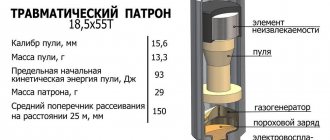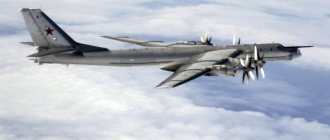International System of Units SI
The International System of Units SI (French Système international d'unités, SI) is a system of units of physical quantities, a modern version of the metric system. SI is accepted as the primary system of units by most countries in the world and is almost always used in engineering, even in countries where traditional units are used in everyday life. In these few countries (eg the US), the definitions of traditional units have been modified to relate them by fixed factors to the corresponding SI units.
The full official description of the SI, along with its interpretation, is contained in the current edition of the SI Brochure (French Brochure SI, English The SI Brochure) and in its supplement, published by the International Bureau of Weights and Measures (BIPM) and presented on the BIPM website - bipm.org
The SI brochure has been published since 1970, since 1985 it has been published in French and English, and has also been translated into a number of other languages, but only the text in French is considered official.
Basic SI units
| Magnitude | Unit | ||||
| Name | Dimension symbol | Name | Designation | ||
| Russian | French/English | Russian | international | ||
| Length | L | meter | mètre/metre | m | m |
| Weight | M | kilogram | kilogramme/kilogram | kg | kg |
| Time | T | second | seconde/second | With | s |
| Electric current strength | I | ampere | ampere/ampere | A | A |
| Thermodynamic temperature | Θ | kelvin | kelvin | TO | K |
| Quantity of substance | N | mole | mole | mole | mol |
| The power of light | J | candela | candela | cd | CD |
The names of SI units are written with a lowercase letter; there is no dot after the designations of SI units, unlike ordinary abbreviations. There is an exception to this rule: the designations of units named after scientists are written with a capital letter (for example, ampere is denoted by the symbol A).
Derived units
The remaining SI units are derivatives and are formed from the basic ones using equations that relate to each other the physical quantities of the International System of Units used in the SI. The base unit can also be used for a derived quantity of the same dimension. For example, the amount of precipitation is defined as the quotient of volume divided by area and is expressed in meters in SI. In this case, the meter is used as a coherent derived unit. Defining SI by fixing constants does not, in principle, require distinguishing between basic and derived units. However, this division is maintained for historical reasons and for convenience.
Examples of derived SI units, the names and designations of which are formed using the names and designations of the basic SI units
| Magnitude | Unit | ||||
| Name | Name | Designation | |||
| international | Russian | ||||
| Square | square meter | m | m | ||
| Volume, capacity | cubic meter | m | m | ||
| Speed | meter per second | m/s | m/s | ||
| Acceleration | meters per second squared | m/s | m/s | ||
| Wave number | meter to the minus first power | m | m | ||
| Density | kilogram per cubic meter | kg/m | kg/m | ||
| Specific volume | cubic meter per kilogram | m/kg | m/kg | ||
| Electric current density | ampere per square meter | A/m | Vehicle | ||
| Magnetic field strength | ampere per meter | A/m | Vehicle | ||
| Molar concentration of component | mole per cubic meter | mol/m | mol/m | ||
| Brightness | candela per square meter | cd/m | cd/m | ||
Derived units with special names and designations
Derived units can be expressed in terms of base units using mathematical operations - multiplication and division. Some of the derived units are given their own names for convenience; such units can also be used in mathematical expressions to form other derived units.
| Magnitude | Unit | Designation | Expression in terms of base units | ||
| Russian name | international name | Russian | international | ||
| Flat angle | radian | radian | glad | rad | m m−1 = 1 |
| Solid angle | steradian | steradian | Wed | sr | m2 m−2 = 1 |
| Temperature in Celsius | degrees Celsius | degree Celsius | °C | °C | K |
| Frequency | hertz | hertz | Hz | Hz | s−1 |
| Force | newton | newton | N | N | kg m s−2 |
| Energy | joule | joule | J | J | N m = kg m2 s−2 |
| Power | watt | watt | W | W | J/s = kg m2 s−3 |
| Pressure | pascal | pascal | Pa | Pa | N/m2 = kg m−1 s−2 |
| Light flow | lumen | lumen | lm | lm | cd·sr |
| Illumination | luxury | lux | OK | lx | lm/m² = cd·sr/m² |
| Electric charge | pendant | coulomb | Cl | C | A s |
| Potential difference | volt | volt | IN | V | J/C = kg m2 s−3 A−1 |
| Resistance | ohm | ohm | Ohm | Ω | V/A = kg m2 s−3 A−2 |
| Electrical capacity | farad | farad | F | F | C/V = s4 A2 kg−1 m−2 |
| Magnetic flux | weber | weber | Wb | Wb | kg m2 s−2 A−1 |
| Magnetic induction | tesla | tesla | Tl | T | Wb/m2 = kg s−2 A−1 |
| Inductance | Henry | Henry | Gn | H | kg m2 s−2 A−2 |
| Electrical conductivity | Siemens | siemens | Cm | S | Ohm−1 = s3 A2 kg−1 m−2 |
| Activity (radioactive source) | becquerel | becquerel | Bk | Bq | s−1 |
| Absorbed dose of ionizing radiation | gray | gray | Gr | Gy | J/kg = m²/s² |
| Effective dose of ionizing radiation | sievert | sievert | Sv | Sv | J/kg = m²/s² |
| Catalyst activity | rolled | catal | cat | kat | mol/s |
There are other non-systemic units, such as the liter, which are not SI units but are accepted for use in conjunction with the SI.
Units of measurement for measured quantities. Wikipedia
ru.wikipedia.org/wiki
Units of measurement by branches of science. Wikipedia
- Units of measurement in astronomy
- Units of measurement in computer science
- Units of measurement in medicine
- Units of measurement in physics
- Units of measurement in chemistry
SI prefixes
SI prefixes ( decimal prefixes ) are prefixes before the names or designations of units of measurement of physical quantities, used to form multiples and submultiples that differ from the base unit by a certain integer, which is a power of 10, number of times. Decimal prefixes are used to reduce the number of zeros in the numerical values of physical quantities. Recommended prefixes and their designations are established by the International System of Units (SI), but their use is not limited to SI, and many date back to the advent of the metric system (1790s).
Prefixes for multiples
Multiples are units that are an integer number of times (10 to some degree) greater than the basic unit of measurement of some physical quantity. The International System of Units (SI) recommends the following decimal prefixes to represent multiple units:
| Decimal multiplier | Console | Designation | Example | ||
| Russian | international | Russian | international | ||
| 101 | soundboard | deca | Yes | da | dal - deciliter |
| 102 | hecto | hecto | G | h | hPa - hectopascal |
| 103 | kilo | kilo | To | k | kN - kilonewton |
| 106 | mega | mega | M | M | MPa - megapascal |
| 109 | giga | giga | G | G | GHz - gigahertz |
| 1012 | tera | tera | T | T | TV - teravolt |
| 1015 | peta | peta | P | P | Pflops - petaflops |
| 1018 | exa | exa | E | E | Em - exameter |
| 1021 | zetta | zetta | Z | Z | ZeV - zettaelectronvolt |
| 1024 | iotta | yotta | AND | Y | Ig - iottagram |
Prefixes for submultiple units
Submultiple units make up a certain proportion (part) of the established unit of measurement of a certain value.
The International System of Units (SI) recommends the following prefixes for denoting submultiple units:
| Decimal multiplier | Console | Designation | Example | ||
| Russian | international | Russian | international | ||
| 10−1 | deci | deci | d | d | dm - decimeter |
| 10−2 | centi | centi | With | c | cm - centimeter |
| 10−3 | Milli | milli | m | m | mH - millinewton |
| 10−6 | micro | micro | mk | µ | µm - micrometer |
| 10−9 | nano | nano | n | n | nm - nanometer |
| 10−12 | pico | pico | P | p | pF - picofarad |
| 10−15 | femto | femto | f | f | fl - femtoliter |
| 10−18 | atto | atto | A | a | ac - attosecond |
| 10−21 | zepto | zepto | h | z | zkl - zeptocoulon |
| 10−24 | iocto | yocto | And | y | ig - yoctogram |
Units of physical quantities. general information
A unit of physical quantity ( unit of quantity , unit , unit of measurement ) (eng. Measurement unit, unit of measurement, unit) is a physical quantity of a fixed size, which is conventionally assigned by agreement a numerical value equal to 1. Any other quantity can be compared with a unit of physical quantity of the same kind and express their ratio as a number. It is used for the quantitative expression of physical quantities homogeneous with it. Units of measurement have names and designations assigned to them by agreement. There are basic and derived units.
Basic units in a given system of units are established for those physical quantities that are selected as basic in the corresponding system of physical quantities. Thus, the International System of Units (SI) is based on the International System of Quantities (ISQ), in which the main quantities are seven: length, mass, time, electric current, thermodynamic temperature, amount of matter and luminous intensity. Accordingly, in the SI, the basic units are the units of specified quantities. The sizes of the basic units are established by agreement within the framework of the corresponding system of units and are fixed either using standards (prototypes) or by fixing the numerical values of fundamental physical constants.
Derived units are determined through the basic ones by using those connections between physical quantities that are established in the system of physical quantities. There are a large number of different systems of units, which differ both in the systems of quantities on which they are based and in the choice of base units. The state, as a rule, legislates some system of units as preferable or mandatory for use in the country.
Unit ratio
| Length measures 1 km = 1,000 m 1 dm = 10 cm = 100 mm 1 m = 10 dm = 100 cm 1 cm = 10 mm 1 mm = 1,000 µm | Measures of area 1 km2 = 100 ha = 10,000 a = 1,000,000 m2 1 ha = 100 a = 10,000 m2 1 a = 100 m2 = 10,000 dm2 1 m2 = 100 dm2 = 10,000 cm2 1 dm2 = 100 cm2 = 10 000 mm2 1 cm2 = 100 mm2 1 mm2 = 0.01 cm2 |
| Volume measures 1 m3 = 1,000 dm3 1 dm3 = 1,000 cm3 1 l = 1 dm31 cm3 = 1,000 mm3 1 mm3 = 0.001 cm3 | Measures of weight 1 t = 10 c = 1,000 kg 1 c = 100 kg 1 kg = 1,000 g 1 g = 1,000 mg 1 mg = 0.001 g |
| Measures of time 1 century = 100 years 1 year = 12 months = 365 or 366 days 1 month = 30 days or 31 days (in February 28 or 29 days) 1 week = 7 days 1 day = 24 hours = 86,400 sec 1 hour = 60 min = 3,600 sec 1 min = 60 sec 1 sec = 1,000 msec | Pressure measures 1 at = 1 kg/cm2 = 735.66 mm Hg. Art. 1 mmHg Art. = 1.36 G/cm2 |
| Current measures 1 ka = 1,000 a 1 a = 1,000 ma 1 ma = 1,000 µa | Measures of voltage and emf. 1 sq. = 1,000 V 1 V = 1,000 mV 1 mV = 1,000 μV |
| Power measures 1 kW = 1,000 W 1 W = 1,000 mW 1 mW = 1,000 µW | Resistance measures 1 Mohm = 1,000 ohms 1 ohms = 1,000 ohms. 1 ohm = 0.001 kom |
| Frequency measures 1 MHz = 1,000 kHz 1 kHz = 1,000 Hz | Measures of information quantity 1 byte = 8 bits 1 KB (1 Kilobyte) = 210 bytes == 1024 bytes (~103 bytes) 1 MB (1 Megabyte) = 220 bytes = 1024 kilobytes (~ 106 bytes) 1 GB (1 Gigabyte) = 230 bytes = 1024 megabytes (~109 bytes) 1 TB (1 Terabyte) = 240 bytes = 1024 gigabytes (~1012 bytes) 1 PB (1 Petabyte) = 250 bytes = 1024 terabytes (~1015 bytes) 1 Exabyte = 260 bytes = 1024 petabytes ( ~1018 bytes) 1 Zettabyte = 270 bytes = 1024 exabytes (~1021 bytes) 1 Yottabyte = 280 bytes = 1024 zettabytes (~1024 bytes) |
For units of information, powers of two (210, 220, etc.) are the exact values of kilobytes, megabytes, gigabytes. And the powers of the number 10 (103, 106, etc.) are approximate values, rounded down. This approximation (or rounding) is quite acceptable and generally accepted.
Converting units of measurement. Conversion tables for physical quantities
Unit conversion is the conversion of a physical quantity expressed in one system of units to another system, usually through a conversion factor. en.wikipedia.org
Length
| 1 inch | = 2.54 cm | 1 millimeter | = 0.03937 inches | ||
| 1 foot | = 0.3048 m | 1 centimeter | = 0.3937 inches | ||
| 1 yard | = 0.9144 m | 1 decimeter | = 0.3281 feet | ||
| 1st kind | = 5.0292 m | 1 meter | = 3.281 feet | ||
| 1 chain | = 20.117 m | 1 meter | = 1.094 yards | ||
| 1 furlong | = 201.17 m | 1 decameter | = 10.94 yards | ||
| 1 mile | = 1.6093 m | 1 kilometer | = 0.6214 miles | ||
| 1 nautical mile | = 1.8532 m | 1 kilometer | = 0.539 nautical miles | ||
Square
| 1 sq. inch | = 6.4516 sq. cm | 1 sq. centimeter | = 0.1550 sq. inches | ||
| 1 sq. foot | = 929.03 sq. cm | 1 sq. meter | = 1,550 sq. inches | ||
| 1 sq. yard | = 0.8361 sq. m | 1 are | = 119.60 sq. yard | ||
| 1 acre | = 4046.9 sq. m | 1 hectare | = 2.4711 acres | ||
| 1 sq. mile | = 259.0 ha | 1 sq. kilometer | = 0.3861 sq. miles | ||
Volume
| 1 cu. inch | = 16.387 cu. cm | 1 cu. centimeter | = 0.061 cu. inches |
| 1 cu. foot | = 0.0283 cu. m | 1 cu. decimeter | = 0.035 cu. feet |
| 1 cu. yard | = 0.7646 cu. m | 1 cu. meter | = 1.308 cu. yard |
Measures of bulk solids and liquids
| Britannia | USA | ||||
| 1 pint | = 0.5506 l | 1 pint | = 0.473 l | ||
| 1 quart | = 1.136 l | 1 quart | = 0.9463 l | ||
| 1 gallon | = 4.546 l | 1 gallon | = 3.785 l | ||
| 1 peck | = 9.092 l | 1 peck | = 8.809 l | ||
| 1 bushel | = 36.369 l | 1 bushel | = 35.24 l | ||
Weight
| 1 oz | = 28.35 g | 1 gram | |||
| 1 pound | = 453.59 g | 1 hectogram | |||
| 1 quintal | = 45.36 g | 1 kg | |||
| 1 short ton | = 907.18 g | 1 ton |
Energy, heat, work
| Energy unit | Equivalent units | |||
| kJ | kcal | kWh | kGS m | |
| kJ | 1 | 0,239 | 0,00278 | 102,0 |
| kcal | 4,19 | 1 | 0,00116 | 427 |
| kWh | 3600 | 860 | 1 | 367200 |
| kGS m | 0,00981 | 0,00234 | 2.72 x 106 | 1 |
Who should take it?
All small enterprises, except micro ones, must report on key performance indicators using the PM form.
If the organization did not conduct any activities during the reporting period, then it submits a form with completed Section 1 “Questionnaire”.
However, small businesses are required to submit any statistical reporting only if they are included in the sample. If the organization has not received a requirement from the statistical authorities, it is not necessary to submit the PM form. You can check whether you must pass the PM through the Rosstat service.











